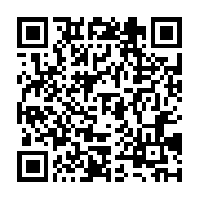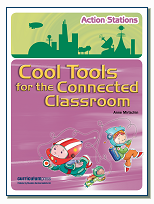Using skype in the classroom
My students argue that videoconferencing with another class in, another country, is the best and most powerful experience for them. They beg for more and more. It is now 12 months since our first experiments with skyping students in Korea.
To successfully connect, the following factors need to be taken into consideration.
Why I like skype:-

- Skype is a free piece of VOiP software, that can connects computers together to allow free telephone calls.
- Follow up service is great, they constantly seek feedback and are always improving their service.
- User and operator friendly
- Inexpensive – just need cheap headset or desktop microphone and headphones, cost of download time is negligible. Download software from skype.
- Allows chat and video conferencing
- May be used to call landlines

Videoconferencing with skype
Hardware/software required:
- downloaded skype software,
- higher bandwidth connection
- web camera
- desktop microphone and earphones, or headset
- Interactive white board for display or a white wall, and datashow or data projector if videoconferencing with a class.
21st century skills required

A new set of skills needs to be taught and developed as there is now a virtual class. Staff and students need to learn and practise these skills.
- Speaking to a web camera requires use of eye contact, stillness or little movement and voice inflexions or animated voices (avoid all montotones). The voice needs to take the place of body language.
- Use of microphone is critical as the audio must be carried to the distant classroom(s).
- Student confidence is crucial – students who are not confident will not be effective. (I have found it is often my quietest students and those who are not so competent in literacy and writing skills who will excel and perform well in the virtual classroom)
- Appropriate placement of any object being displayed needs to be carefully considered for maximum effect eg when demonstrating a jar of vegemite – the angles need to be checked for maximum effectiveness.
- Keep any movement of objects or people to an absolute minimum, or else there is too much blurring.
- Use the chat window feverishly for feedback, questions and variety of delivery. If dealing with a country that does not speak English as their first language, or if the sound quality is not so good, the chat is great to type in the key phrases, to ensure they understand what is said.
- Video should be used to keep the class interested and give some concept of a third party(ies).
- Diction is another crucial element in successful use. You need clear, slow voices and short, simple sentences.
- Need to be able to multitask eg speak, read chat, position camera, microphone, control and manage existing class and virtual class etc.
Management issues
- Keep the camera as still as possible. Better to bring the students and objects to the camera, rather than move the camera to them.
- Seat students appropriately, so that they can be seen via the web camera.
- Allocate roles to students eg chat window, web cam operator, microphone manager etc as this is a real multi tasking operation.
- Ensure everything is organized right from the start – all materials required are on hand.
- Determine the outcomes and plan the class accordingly. (We find it is good to get to know each other first – so a show and tell of school, classes, country, culture etc works well in the initial stages.)
- Always test the equipment before starting the class and test prior teacher to teacher before the day. Practise with family, other teachers in school, country and then abroad.
- Always use chat to ensure that the other class is ready, then when given the ‘all clear’ ring.
- Organisation, confidence and management are the key to success.
- If the call drops out, come back in and switch the videooff for the group who is listening, then reverse and switch yours on when talking. If it continually drops out even with just one video on, switch off both videos and continue with chat. (not as exciting but it is still maintaining connection)
Class discipline
This is an area of difficulty, as the teacher needs to be working at the front with the technology, student speaker etc. Small groups are far more effective and manageable. If students are misbehaving, ensure that the camera does not pick that up. Cross culture teaching is interesting and so exciting but expectations differ. Have a management plan for discipline problems ready before commencing. Most students love this kind of work, but if sound quality, voice carry over, technical issues, software dropping in and out it may become boring and students, restless.
Always have a backup lesson ready should the internet not function and a backup date for another attempt.
Constraints
- Video option is lost once there are more than two participants in the conference.
- Long distance and differing bandwidth connections are still unstable. Connections with Korea and Russia were not as stable as those with USA and Canada.
- May be blocked in many educational institutions especially universities.
- Skype does not like another program being open at the same time if that program also uses a video camera option. So close any other programs down, before using videoconferencing with skype, and restart the computer if necessary.
Concerns:
- Security cannot be guaranteed although, operator has option of allowing a person to use your phone number of name, before being listed as a contact.
- Risk of viruses over large organizations.
- Bandwidth variations
We have successfully skyped with video to USA, Canada, Korea and Russia. In conclusion, these are such rich learning experiences with amazing learning outcomes and gives us a taste of where the future of education may head.
Since I wrote this post, @Peter@skype found me on twitter and gave me this great link with advice on improving my connection:- “You might find the call quality guide useful – and let me know if you run into problems next time 🙂 http://is.gd/3XZL”
Here is a great video presented at the K-12 Online conference by Sylvia Tolisano (Our class was proud to be one of those Around the World with Skype.
Great article by Shelly Terrell with lots of wonderful links and resources featured – Learning Beyond Walls: 21 Skype Resources
Read this blog post translated into the Armenian language





















 Twitter/murcha
Twitter/murcha Del.icio.us/murcho
Del.icio.us/murcho GMail/Anne M
GMail/Anne M Blog/Anne M
Blog/Anne M
Fabulous post, Anne.
Just had a great Skype with Sue Wyatt’s class. We had a great time, but it was our first, so a lot to learn. Skype is a great opportunity for meaningful cultural connections.
Our Skype with Jan Smith’s class in Canada went really well. But after the call, I had my students do a review of how we should teach other classes to make Skype calls. What to set up, how to do it etc and then they evaluated our call and gave it a 29 out of 50 so you can see we still have a long way to go to make an excellent Skype. But according to the students, they don’t mind practising more often .. lol
@jansmith and @ Miss W There certainly is a lot to learn and we find the show and tell aspect is the best connection in the intial stages. Kids love to see things and relate to them. We are still learning all the time as well.
Hi Anne a fantastic post! We have been using Skype too. It’s an amazing tool. This year we held a Skype Concert with Sherborne Primary School. It was an amazing experience. Sherbourne’s Choir and Concert group performed two songs from their school show and three of our grade 3/4 classes performed two songs for them. All we used were DVC’s, laptops and stereo systems. It was really like having an audience in the room. We run several tuned percussion ensembles and who would love to share their music with other students using Skype.
@andrew I love your idea of skype concerts. We have some music in the school and there are some kids who just play in a garage band in the school. I have been thinking about a skype linkup with our connection in Manilla trying a music concert at lunchtime. How did the bandwidth go with your concert? Was there a time delay at all? Great idea and might talk to you more about it sometime. We could always be a willing audience if you need one.
Agree with all the others – this is an excellent post.
Anne, thanks for this wonderful post about Skype! You are really inspirational and methodical in your classroom integration.
Skype is amazing in that it is free or virtually free to use. What is problematic are the different time zones and working days (eg the Middle East has weekend days on Thursday/Friday or Friday/Saturday).
Hi, I am a librarian at Suffern Middle School outside New York City in the US. I just found this site through google alerts and am really enjoying reading about all our projects. I have a question on sound:
We’ve been trying to skype with a school in Italy. computer to computer worked, but when I added the video camera and an external sound unit (Fender) to amplify sound, we had sound problems. Both times we couldn’t get audio on one end. Have you any experience with what may have happened. Love the music and show&tell ideas. Check inputs, etc. Then disconnected external source and still couldn’t hear. Any ideas from anyone on what I am doing wrong would be great appreciated. We did the same set up (basically) with Japan successfully.
It would be wonderful if there was some sort of technological solution that allows for a camera to pan/tilt/zoom. Any ideas?
Pingback: 23 Things: Thing 7b - More from my RSS reader… | Technology Infused Learning and Teaching
I’d also recommend Skype for language exchanges. Have each of your students help someone with their English in exchange for time practicing the language they’re studying.
Pingback: Langwitches » links for 2008-12-13
Wow, what a coincidence! Our class in Hafford SK Canada just had a Skype conference with some students in Waterloo Illinois – probably our most successful yet. We still have problems with sound quality. I’ve been using my macbook laptop with a data projector and have attached computer speakers to my laptop. Sometimes we get crackling/distortion. I think some comes from breathing on the mike/rustling nearby the mike, but I wonder if anyone has any other suggestions to make the sound connection better.
PS: We’d love other classes to Skype (Ustream…ete) with. Our experiments have just begun!!! Patricia Cone, teacher of Hafford Grade 5 and 6.
PPS Loved your post!! (My email is pat.cone@lskysd.ca)
I’m a bit late in following this post Anne, but really interested in what you did via Skype. Thank you so much for sharing your experiences and your suggestions for making classroom skyping effective.
Pingback: Quick Start Tips For New Skype Users | The Edublogger
I am excited about this! I currently use Skype with my webcam for personal use, but I would love to use it in the classroom. How would I go about finding a classroom in another country to connect with? I love that idea!
Ann, Thanks for this post – great details for educators. We have most recently used Skype for speaking with an author of a new children’s book .
Pingback: Where to find schools to connect with « On an e-journey with generation Y
Pingback: Quick Start Tips For New Skype Users | Citrus 7 Usability
I’m really enjoying learning more about Skype through your site. I teach 6th grade math and will be starting measurement soon. I’m very interested in connecting with a school that uses the Metric System. I think Skype would be a great way to discuss the Standard vs. Metric in a very real way.
I’m a 6th Grade Social Studies teacher in Alpharetta, Georgia. My students and I are looking for other classes of our age (11 &12 year olds) to connect with and start our skyping.
Anne,
I am the US blogger for Skype. Wondered if we might speak some time on a Video about howyou use Skype in the classroom and share your secrets for doing effective Video?
Check out:
http://share.skype.com/sites/us/2009/01/heres_their_view_of_the.html
Howard Wolinsky
howard.wolinsky@gmail.com
Hey There! Skype is a very fun. I love how you can talk to people around the world.
Bye
Hi Anne,
I’m Nicholas. I think skype is totally awesome. Our class, Huzzah had a skype call with Ms.Wyatt’s class. It was very interesting because we could see them and talk to them at the same time.
Thanks, Anne. It took about a year’s worth of whining, but my district is now allowing Skype. Through a federal grant, I’ve just purchased laptops for 20 elementary teachers. Each computer is imaged with Skype.
Hope to connect some California classrooms with Australia!
Gail
Hi Anne,
Thanks for providing the great post. I am,or rather my class and I are having our first Skype Video conference tomorrow. We are hooking up with a school in Gladstone. Our next adventure will be on Monday when we try our link with Silvia’s class for Around the World in 80 Days.
I am overwhelmed as I am not really sure what I am doing and definitely not sure how it all works.
Will let you know how it turns out.
Dear English Teachers abroad,
Hello, My name is Iboneth Beltran, I am from Bogota Colombia South America.
I am an English Teacher and Professor. I have been teaching for 10 years and I am taking my Second Master’s right now. My Master’s is in ELT and we have a technological component, so my Research Project is about:
“THE USE OF SKYPE CHAT FOR IMPROVING WRITING SKILLS IN AN A2 ADULT LEARNERS GROUP”
I do want to contact you because as part of my research requirements, I must do a search of similar projects and experiences faced and handled by teachers abroad and contact them to share findings.
I hope to know from you soon!
Thanks a million,
Iboneth Beltran.
Languages Teacher & Educational Manager
Pingback: 50 Awesome Ways to Use Skype in the Classroom | Teaching Degree.org
We had a Skype exchange with a Scottish class over the last six month, but we encountered a lot of connectivity problems. Has anybody any experience with simultaneous Skype sessions? We were able to make between two to eight connections at the same time and in the same room.
My 9th grader and I, we’d love to get in contact with an English speaking class (natives) in order to establish long-term connection.
Hi Beni, I am trying to work out what country you are from. We are always happy to connect. Over the last 12 months we have had some problems too with dropping out and having to ring back in, but since the new version of skype we have had few problems. When we did have difficulty, we found we had to switch off one of the videos, and just have the video on the student or class who was talking at the time, and then swap to the video of the other party when it was their turn to talk and demonstrate. Skype have been rather good at trying to improve all the time.
Pingback: First impressions: Skype on the iPod touch « ~ Mark's Musings ~
Pingback: Langwitches Blog » K12Online Presentation: Around the World with Skype
My class Skyped with a college-aged study-abroad student living in Vienna and traveling in Western Europe this past fall.
Skyping provided a wonderful opportunity to compare and contrast various aspects of life in Europe and the U.S. The range and perceptiveness of student questions provided insight for me into what areas of background knowledge could be expanded with non-fiction text and what they were interested in learning.
Child friendly Google provided opportunities to try out on-line translations, do further research, to refine searches, and to round up photos and maps. One of my students used “That Quiz” on line to teach himself to count Euros. The students learned to mentally convert CST to Vienna time and the reverse. We compared and contrasted weather. My students learned about effective and efficient public transportation, Pompeii, the Alps, flooding in Venice and how that may relate to global climate change, concentration camps, salt mines, Renaissance and Gothic architecture, music and musicians, Freud, art and artists, The Globe Theater, pub literary crawls, the story of The Sound of Music and how it relates to WWII, and Paddington Station. Nine year old students genuinely excited about doing and listening to book reports on ancient history is the eighth Wonder of the World!!!
The assessment at the conclusion of the experience was a compare/contrast essay on the topic of Christmas customs that led to the conclusion that we are more alike than we are different. This experience provided opportunities to clarify conceptions and correct misconceptions about life in other places. The student excitement was electrifying.
My daughter has a T Shirt that says “I love my country but I think we need to start seeing other people”. Skype is a low cost way to “see other people” who live far beyond the backyard fence but with whom we share more similarities than differences. As we travel through our lives and, together, tackle global concerns on the spaceship we share, we are certainly “the ones (with the opportunity) to make a brighter day”.
I am now seeking another opportunity to communicate with international students.
What an amazing detailed comment detailing the impact of videoconferencing and using tools such skype can have on students and the classroom. Thank you so much, Lynn for sharing this with us. How did you get to meet the College aged student who lived abroad in Vienna? Was she from your area initially?
I’ve been using skype in conjunction with http://www.koofers.com, it’s a great site that’s helped me study and is 100% free. We can quiz each other on note cards without being in the same room!
Here is a great table that compares videoconferencing options http://images.plurk.com/136054_2c7e4bc23ca3786af391cb553326a9fa.jpg
Pingback: How to Use Skype in the ESL/EFL Classroom by Sarah Elaine Eaton « Chitorey's Mind Blog
Pingback: How to Use Skype in the ESL/EFL Classroom « sam020890
Pingback: How to Use Skype in the ESL/EFL Classroom | mryogipratama
Pingback: How to Use Skype in the ESL/EFL Classroom « Wiie's Blog
Pingback: Learning with Stats! | On an e-Journey with Generation Y
Pingback: Using Skype in the classroom | St Michael's Lutheran Primary School
Pingback: Educator Life | Four Easy Steps to Classroom Skyping
Pingback: The Complete Educator’s Guide to Using Skype effectively in the classroom | The Edublogger
Pingback: The Complete Educator’s Guide to Using Skype effectively in the classroom | Education
Pingback: 5 Ways to Use Skype | Tech4Ed
Pingback: CALL/ Reflections - How to Use Skype in the ESL/EFL Classroom
Pingback: 10 Ways Teachers Motivate & Empower with Skype (Part Four: Get Started) | TwitChange
Pingback: 50 Awesome Ways to Use Skype in the Classroom :: Teaching Degrees :: one web guy
Pingback: Using skype in the classroom | Library & Teaching Ideas | Scoop.it
Pingback: Localization of Blog Posts to cater for all languages | On an e-Journey with Generation Y
Pingback: Analyzing Case Studies using Social Media | Technology for Educators
Pingback: Using skype in the classroom | Edtech | Scoop.it